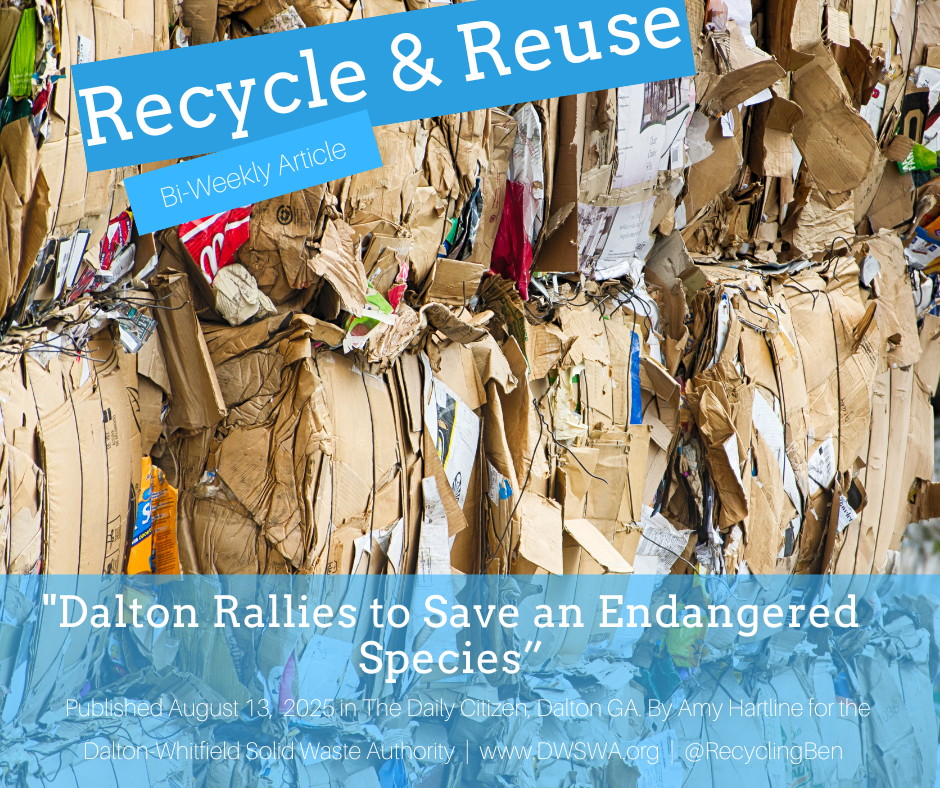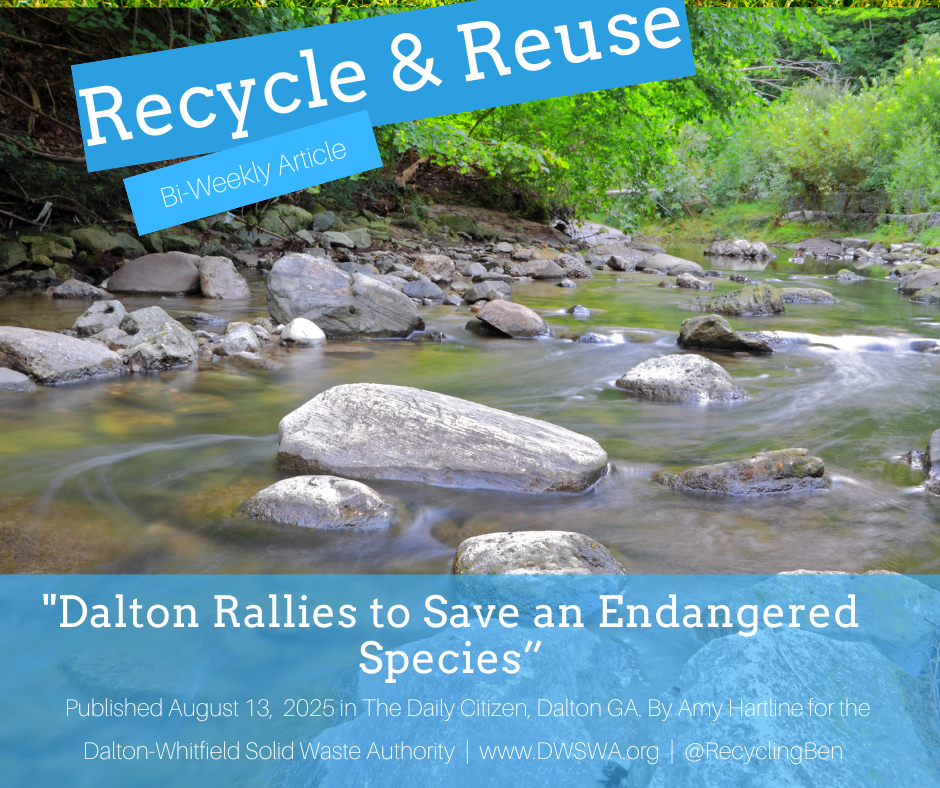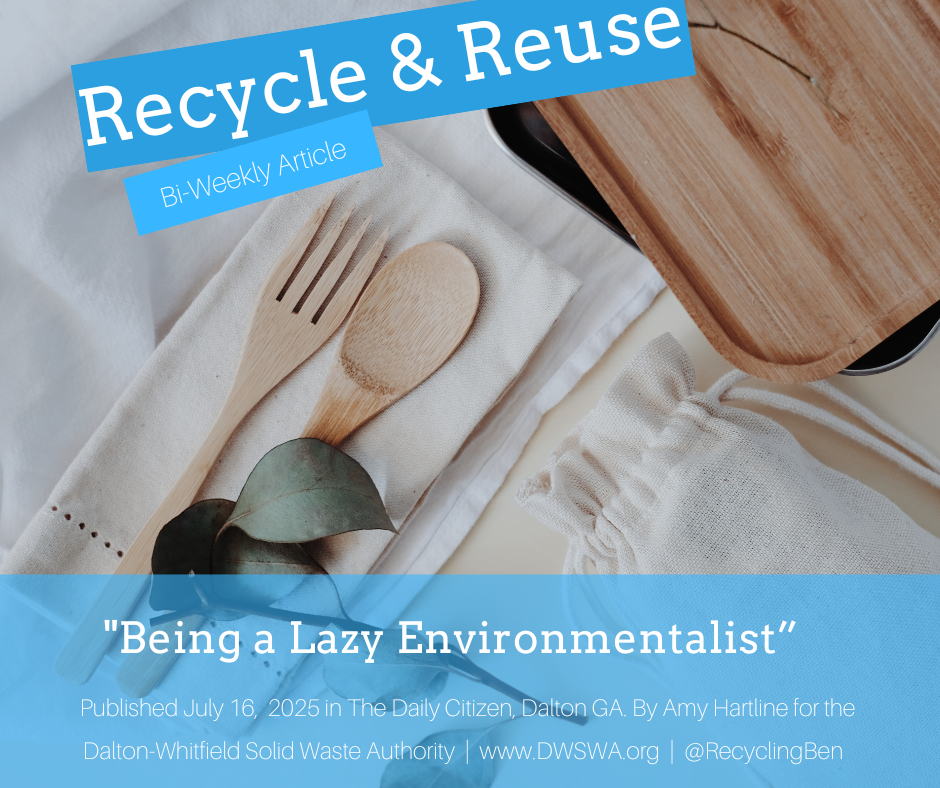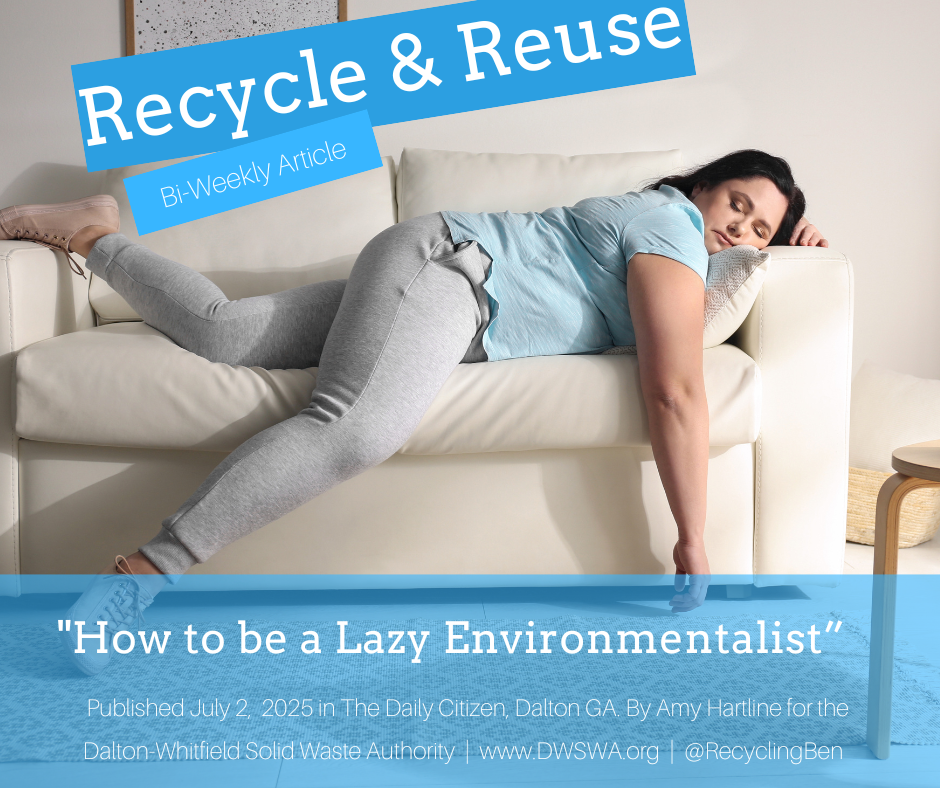Make Garbage Great - Book Review
/(Published on Wednesday, October 21, 2015, in The Daily Citizen, Dalton, GA.)
Recycle & Reuse: Make Garbage Great
Make Garbage Great: The Terracycle Family Guide to a Zero-Waste Lifestyle was published earlier this year by Tom Szaky and Albe Zakes, stars of the reality television show Human Resources. Both men help run a company called Terracycle, known for recycling uncommon materials into new products. The words ‘garbage’ and ‘great’ rarely come together in the same sentence making this book a standout on eco-friendly living blogs online. Whether you’re a beginner to going green or want to learn even more about reusing and upcycling this book has something for everyone.
As a professional in the solid waste industry, I have noticed the shift to viewing waste as a resource instead of something to be buried and lost in a landfill. However, this idea is not yet mainstream. While manufacturers and waste industry professionals may also see this change it’s difficult to communicate this mindset shift from waste to waste management to the general public. That’s why I absolutely love the new book Make Garbage Great. With a combination of graphics and simple explanations the issue of managing our waste is broken down into manageable sections.
The book is divided into eight chapters that tell the story of materials we use daily: plastics, metals, paper, textiles, glass, wood, rubber, and organics. Each chapter includes a history of the material, examples of its uses, a craft you can make with upcycled materials, full-color photos, lifecycle diagram of a product made with that material, and a focus on a current issue related to the material. With more than 200 photos and illustrations, and more than 100 tips and do-it-yourself projects, this educational book has become the ultimate guide to living a zero-waste lifestyle.
By far the most interesting chapter for me was the one about plastic. Polystyrene, the first type of plastic was invented in 1839 and was followed by the invention of the man-made plastic Parkesine in 1856, and celluloid in 1870. However, plastic didn’t become popular with consumers until the late 1940’s with the introduction of Tupperware products. Since then we’ve seen a variety of products from plastic drink containers, Legos, and Saran Wrap to name a few. A quick look around the kitchen pantry will reveal condiments and sauces stored in a lightweight plastic that is cheaper to transport than glass containers.
Can garbage really be great? The new book “Make Garbage Great” challenges us to see garbage as a valuable resource not waste. Pictured is the opening spread for the chapter about paper.
Despite the innovation around different types of plastic being invented the recycling and repurposing of such products was not keeping up with the pace. The amount of plastic has increased dramatically from 390,000 tons in 1960 to 32 million tons in 2011, which now makes up thirteen percent of our waste. However, in 2011 only eight percent of plastic was recycled. This is unfortunate because a man-made material such as plastic is actually highly recyclable.
Locally, for example, we can recycle plastic bottles and jugs like soda and water bottles, laundry detergent jugs, milk jugs, and condiment bottles. And, many retailers have recycling containers for plastic shopping bags and plastic wrap or film from products like paper towel rolls. Larger cities are able to recycle more plastic containers like yogurt cups and TV dinner trays. But for all the recycling outlets available we are still falling short of the potential one hundred percent recycling rate.
Today, we throw away enough plastic dishware and cutlery to wrap around the earth 300 times. Single use plastics are everywhere – drinking straws, dental floss, chewing gum, clothing, electronics, toys, and even cigarette filters. Because so many plastic products are single use items they also have become some of the most littered. And, considering that plastic doesn’t biodegrade but rather photodegrades it can be in the environment for hundreds of years.
When plastic photodegrades it turns into smaller bits of plastic, called nurdles, so it never truly disappears. This means that any plastic created since the mid-1800’s that has not been incinerated is still here. It’s frightening to think that the plastic fork you used during your sixth birthday party to eat cake is still hanging around buried somewhere in the landfill. Not to mention all the plastic waste that has ended up in the ocean as part of the Great Pacific Garbage Patch.
But, garbage is in fact great if we see it as a resource, a material that needs to be managed and not discarded. You may not want to have a zero-waste lifestyle, but if you realize that every product we use is made from a finite natural resource you’ll begin to see things differently. This month I challenge you to try one of the DIY crafts from the book yourself, make it a priority to sort and recycle your waste at home, and even pickup litter you see outside.
Liz Swafford is the Recycling and Education Program Coordinator for the Dalton-Whitfield Solid Waste Authority. Learn more about recycling in Whitfield County by visiting www.DWSWA.org or call 706-278-5001.































